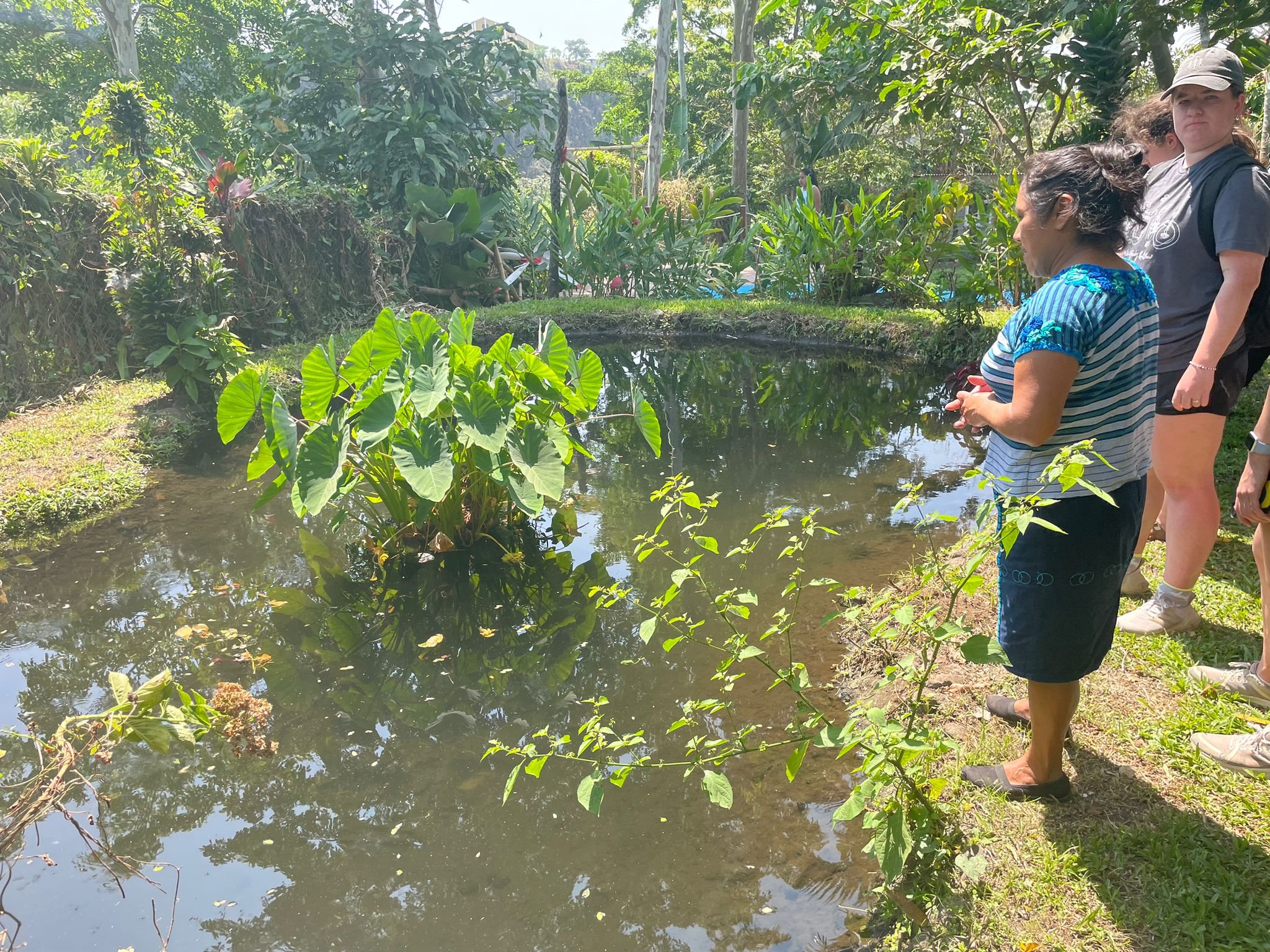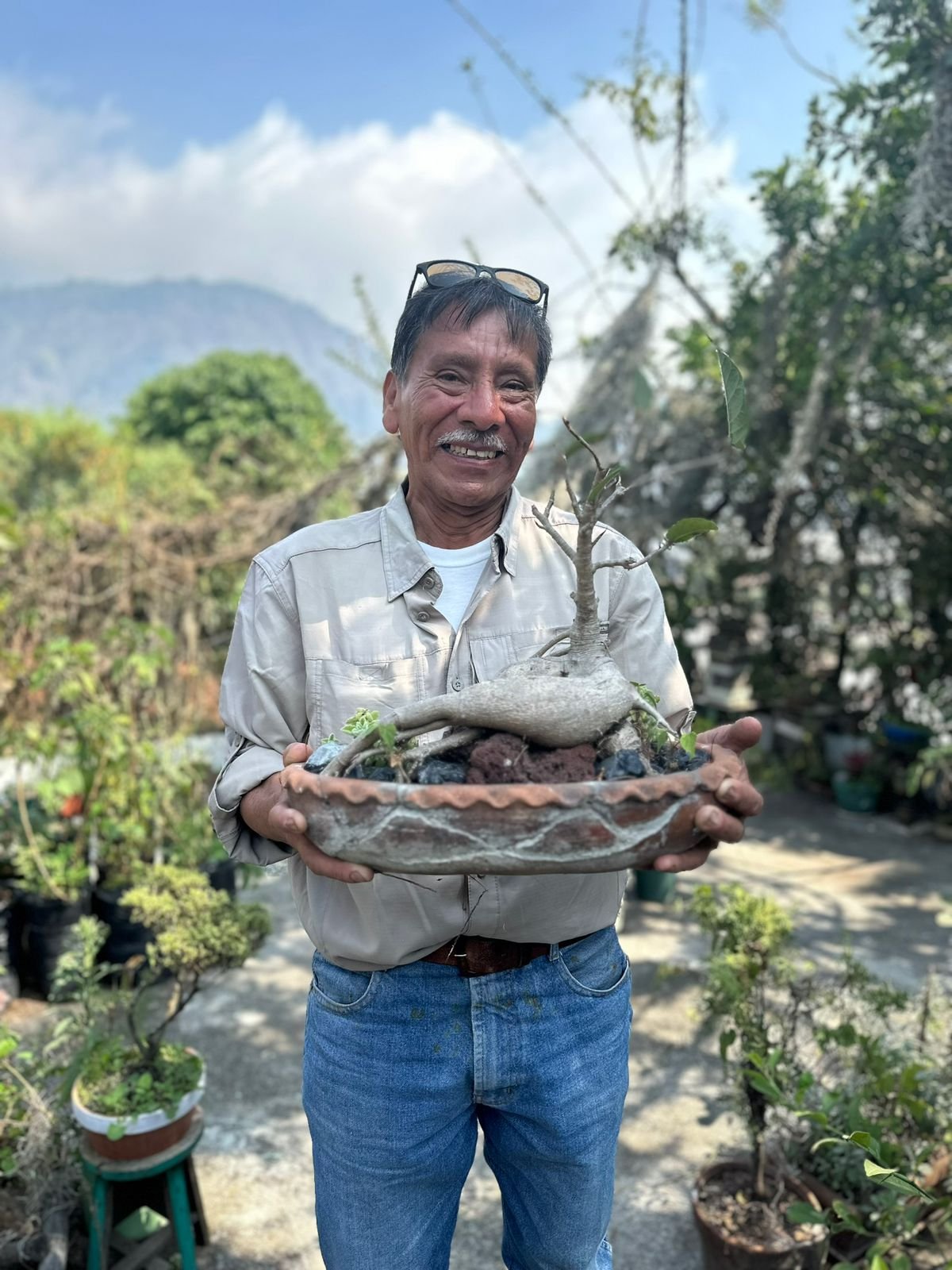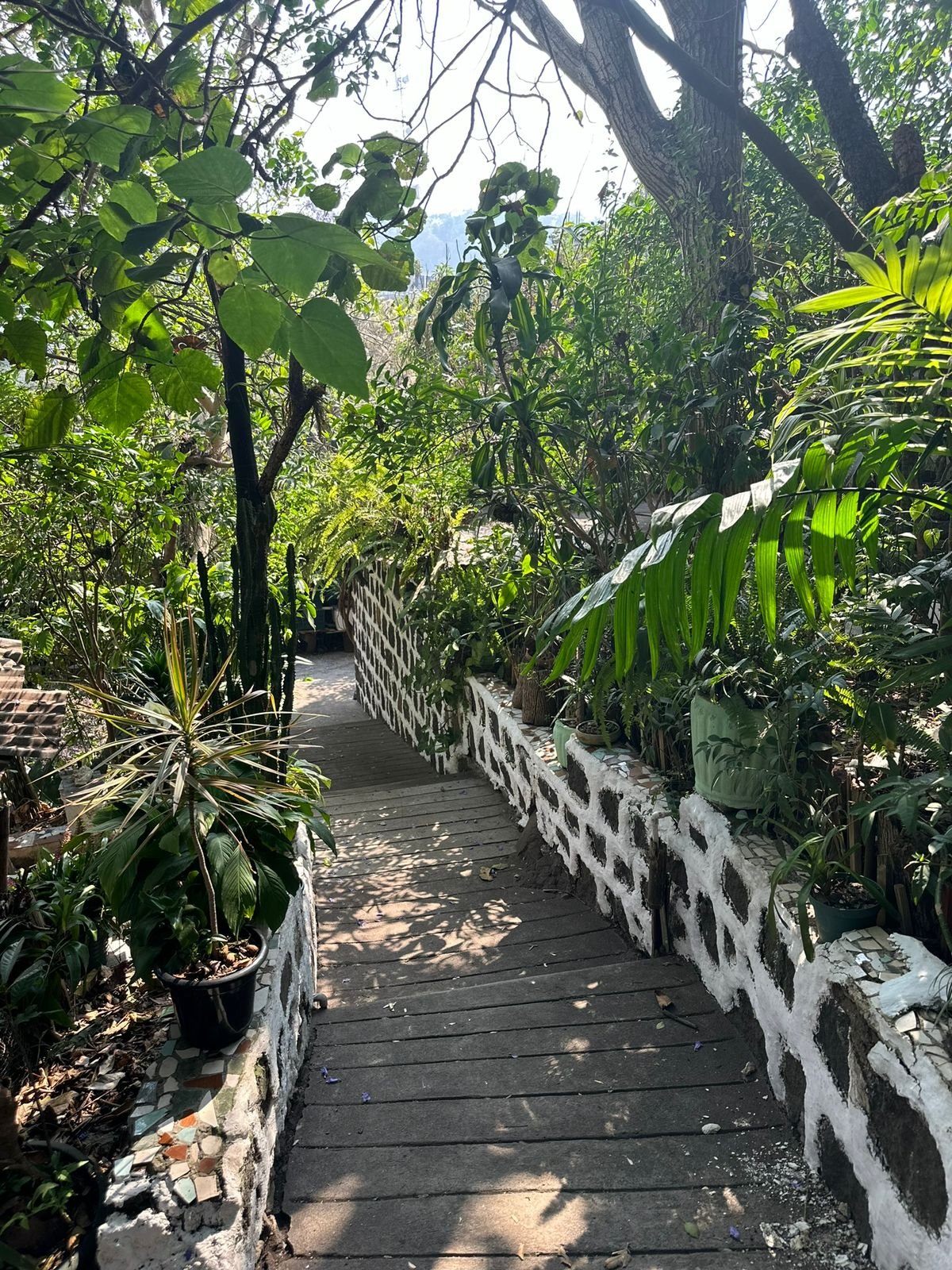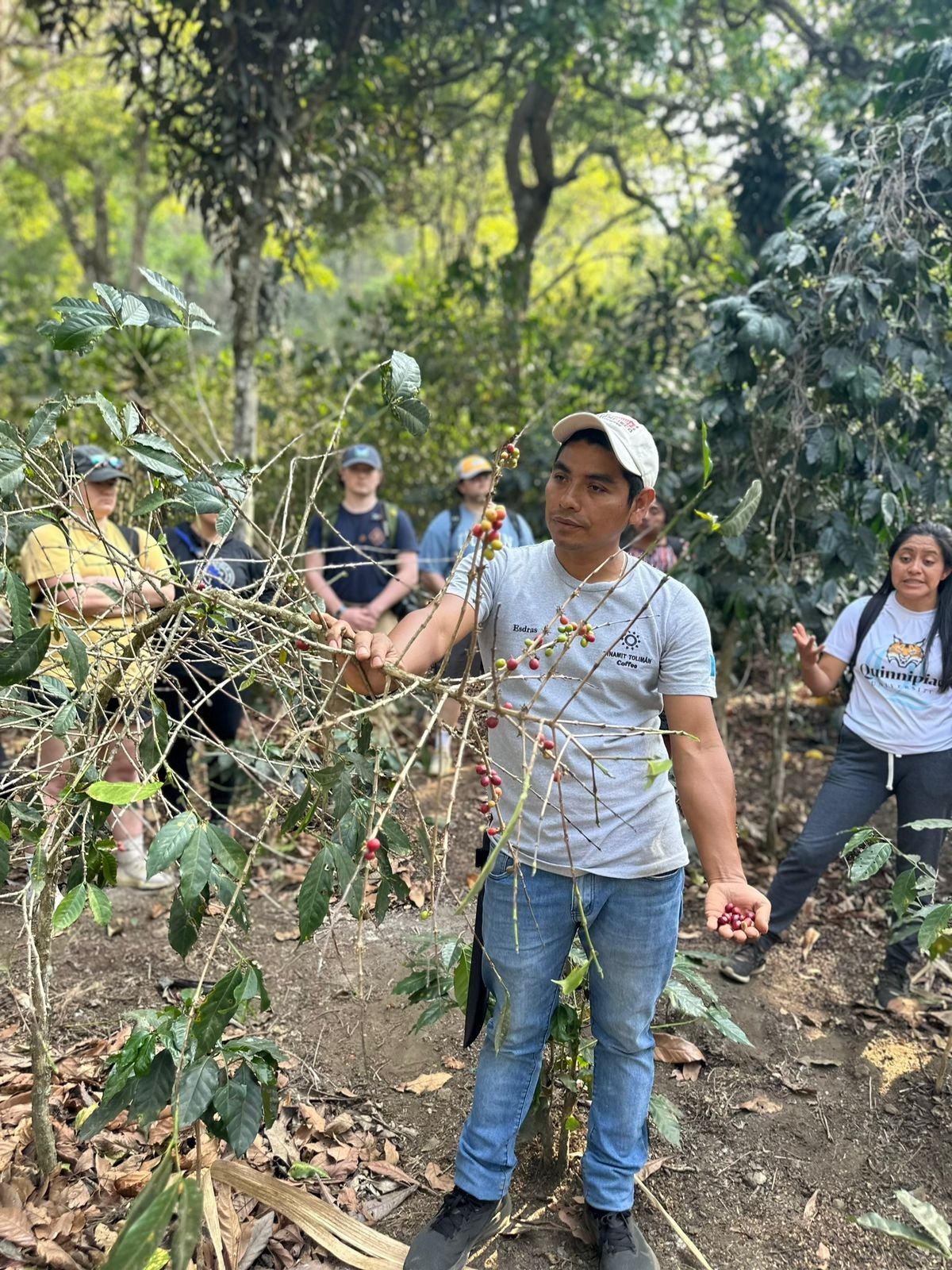In San Lucas Tolimán, Culture Grows From the Land

BY Ismaeel Zafer
Being born in San Lucas Tolimán is akin to being a ship battling against relentless headwinds, with nothing but sheer resilience to navigate until reaching solid ground. With a population exceeding 40,000 residents, San Lucas Tolimán sits south of Lake Atitlán in the southern region of Guatemala. Life here is characterized by a constant struggle for survival.
In San Lucas Tolimán, every aspect of life is marked by perseverance against overwhelming odds. Economic hardships plague the community, with limited job opportunities and meager wages forcing families to scrape by. Access to essential services such as healthcare and education is often a luxury rather than a given, amplifying the daily challenges faced by residents.
Moreover, the geographical location of San Lucas Tolimán presents its own set of obstacles. Situated in a region prone to natural disasters such as landslides and floods, the community must constantly contend with the threat of environmental instability.
Despite these adversities, the people of San Lucas Tolimán display an unwavering spirit and a deep sense of solidarity. They draw strength from their tight-knit community bonds, supporting one another through the toughest times.
Agriculture forms the backbone of the local economy in San Lucas Tolimán, with many residents relying on farming as their primary source of livelihood. The fertile lands surrounding the town are cultivated for a variety of crops, including corn, beans, coffee, and vegetables. However, the agricultural sector faces numerous challenges, including unpredictable weather patterns, and soil erosion.
Despite these obstacles, the people of San Lucas Tolimán exhibit remarkable ingenuity and resourcefulness in their approach to agriculture. Traditional farming methods are passed down through generations, with families working tirelessly to tend to their crops and maximize their yields. Community cooperatives also play a vital role, allowing farmers to pool their resources and knowledge to overcome common challenges.
Moreover, the agricultural sector in San Lucas Tolimán is not only a means of economic sustenance but also a cultural cornerstone. Farming practices are deeply intertwined with local traditions and customs, shaping the identity of the community and fostering a strong sense of pride in their agricultural heritage. Many of the colors spread around them are related to their traditional dress and the nature that grows around them.
Coffee production dominates much of the agricultural landscape, with many farmers dedicating their land solely to coffee cultivation. This monoculture approach, while providing a steady income for some, also poses significant risks to the local ecosystem and economy. In light of climate change, monoculture agriculture may pose a threat to the environment through the use of pesticides in order to accelerate the pace of crop production or dispense with basic crops that the population needs in exchange for other, more profitable crops.
Due to the challenging living conditions faced by the residents of San Lucas Tolimán, including the lack of government-provided services, logistical difficulties, and healthcare access, many have turned to monoculture agriculture out of necessity rather than choice.
The primary products that have become profitable alternatives for residents are avocado, coffee, and cotton due to high global demand. However, coffee farmers often reap limited profits from their sales, with the primary beneficiaries being export traders, according to members of the Tinamit Tolimán Integrated Agricultural Association.
According to the association, which cultivates various types of coffee on the slopes of volcanic mountains, individual farmers in Guatemala cannot work alone as they lack the funds for agricultural machinery and necessary tools. Thus, cooperative associations provide income for thousands of families in the area. "We are collaborating with dozens of families to expand our production operations instead of relying solely on selling the raw coffee beans after harvesting," says Esdras Cumes, a member of the association.
Cumes confirms that entering the market of what is known as "specialty coffee," which involves producing coffee after harvesting only the red coffee cherries and separating them from the rest, has contributed to the revival of their coffee production operations. They sell these separately to various cafes, as he explains, "We supply coffee to stores that contract with us, have participated in specialty coffee competitions at the national level in Guatemala, and we aim to enter international competitions for the quality of specialty coffee."
These agricultural alliances empower expansion in agricultural production, allowing farmers to produce, roast, and package coffee instead of merely selling tree fruits.
Although the journey of agriculture is an integral and essential part of the generational heritage of San Lucas Tolimán, the challenges extend to the local population, where the population faces challenges such as farmers feeding their children.
Agriculture takes a more sustainable direction through fish farming, which farmers in the region turn to for its financial viability and to ensure that the fish are not affected by pollution as is the case in Lake Atitlán, parts of which are polluted.
Fish farmer María Patricia Morales, 53, states that she grows one type of fish while utilizing the water used in fish farming as fertilizer, in addition to planting various aquatic plants that live with the fish.
Despite the profitability of fish farming and its sustainable system that provides fertilizers and the cultivation of various products, it is not an easy journey for farmers in San Lucas Tolimán. Morales states that threats such as fish poisoning and bird attacks cost her a lot of losses every year. Additionally, she faces sexism and monopolistic blocs from her competitors, male fish producers in the market.
In San Lucas Tolimán, agriculture today is a way of life and a daily necessity practiced by the people according to the traditions of the Maya tribes they belong to, constituting more than 40% of the total population in Guatemala. They weave using the cotton produced in the region to make their daily clothing.
The daily journey of farming in San Lucas Tolimán is a story painted by the culture of the Maya groups and their traditions and beliefs, reflecting their diet, clothing, and sources of income.
Silvia Galindo, 45, says she began weaving at the age of 7 to help her family. "ّI love to make my clothes" she said. Referring to the connection between weaving and agriculture and the surrounding environment, according to the customs of the Maya people in San Lucas Toliman, Galindo affirms that the colors of the fabric are inspired by the natural landscapes around them. For example, blue represents Lake Atitlán, while white in the fabric symbolizes peace.
While referring to the difficulties faced by weavers in San Lucas Toliman, she said: “We buy ready-made and colored textile threads, because we do not have other spaces to grow plants for making textile colors.”
In emphasizing the return to nature, Heber Perez, a community leader in San Lucas Toliman, explains that blending certain colors together yields hues from the region's crops, such as the brown color extracted after blending leaves from the "Trey" tree with other plants. Additionally, the white color is obtained from the original cotton color, with the addition of some materials to give it a shimmer.
Perez adds that agriculture is not the only factor influencing the textile industry; even insects play a role. The red or crimson color is extracted from cochineal bugs, small insects found in farms and homes.
In the lush landscapes of San Lucas Toliman, nestled in the heart of Guatemala, 65-year-old Jorge Letona stands as a beacon of environmental stewardship. With over 35 years of experience as both a forest guard and agricultural consultant, Letona has dedicated his life to safeguarding the delicate balance of nature against the encroaching threat of monoculture farming.
Letona lamented the rise of monoculture farming, citing its devastating impact on the environment. He emphasized the importance of integrated agricultural ecosystems, advocating for harmony and diversity to ensure their longevity for generations to come. Letona's deep-seated concern stems from witnessing the economic allure of monoculture farming leading some farmers astray, forsaking the intricate web of biodiversity for short-term gains.
But Letona's commitment to preserving nature extends far beyond words. In his own garden, a veritable oasis of life boasting over 500 different plant species, Letona finds solace and inspiration. Every corner of his garden tells a story of integration and coexistence, a testament to his belief in the interconnectedness of all living things.
Yet, Letona's efforts transcend the boundaries of his garden. Fearing the extinction of certain plant species, he has taken it upon himself to collect specimens from the forest and replant them at home, a humble act of conservation born out of a deep-seated love for nature.
As climate change casts a shadow over Guatemala's agricultural landscape, Letona remains undeterred. He acknowledges the direct impact of climate change on agriculture, with droughts wreaking havoc on crops and livelihoods. Yet, in the face of adversity, Letona sees opportunity. By raising awareness and promoting alternative agricultural methods, he believes that communities can mitigate the effects of climate change and build a more resilient future.
In the eyes of Jorge Letona, the fight against monoculture farming is not just a battle for biodiversity; it's a fight for the soul of the land itself. "monoculture is not good for our health and our earth... We need to diversify on this land" he said.




